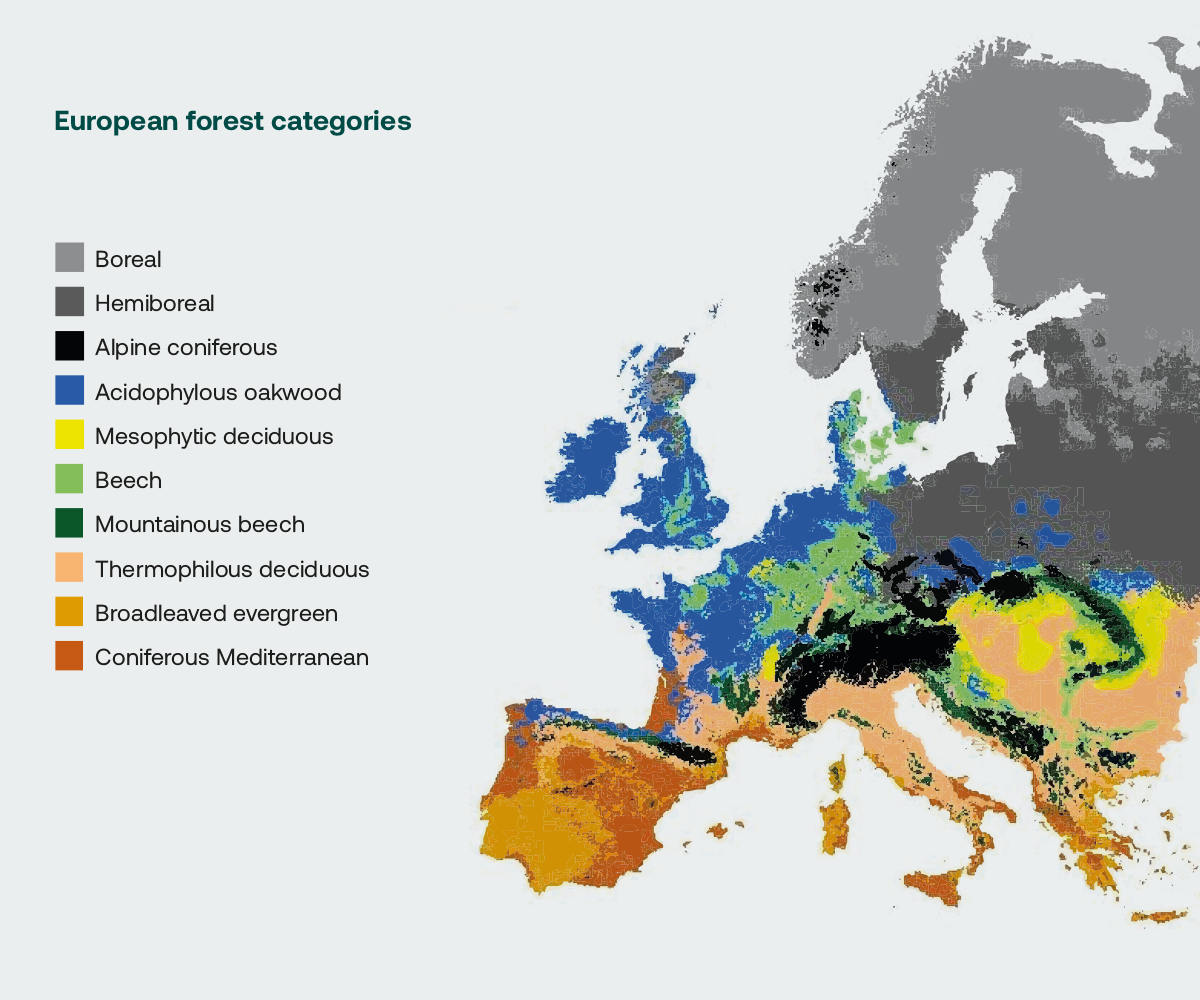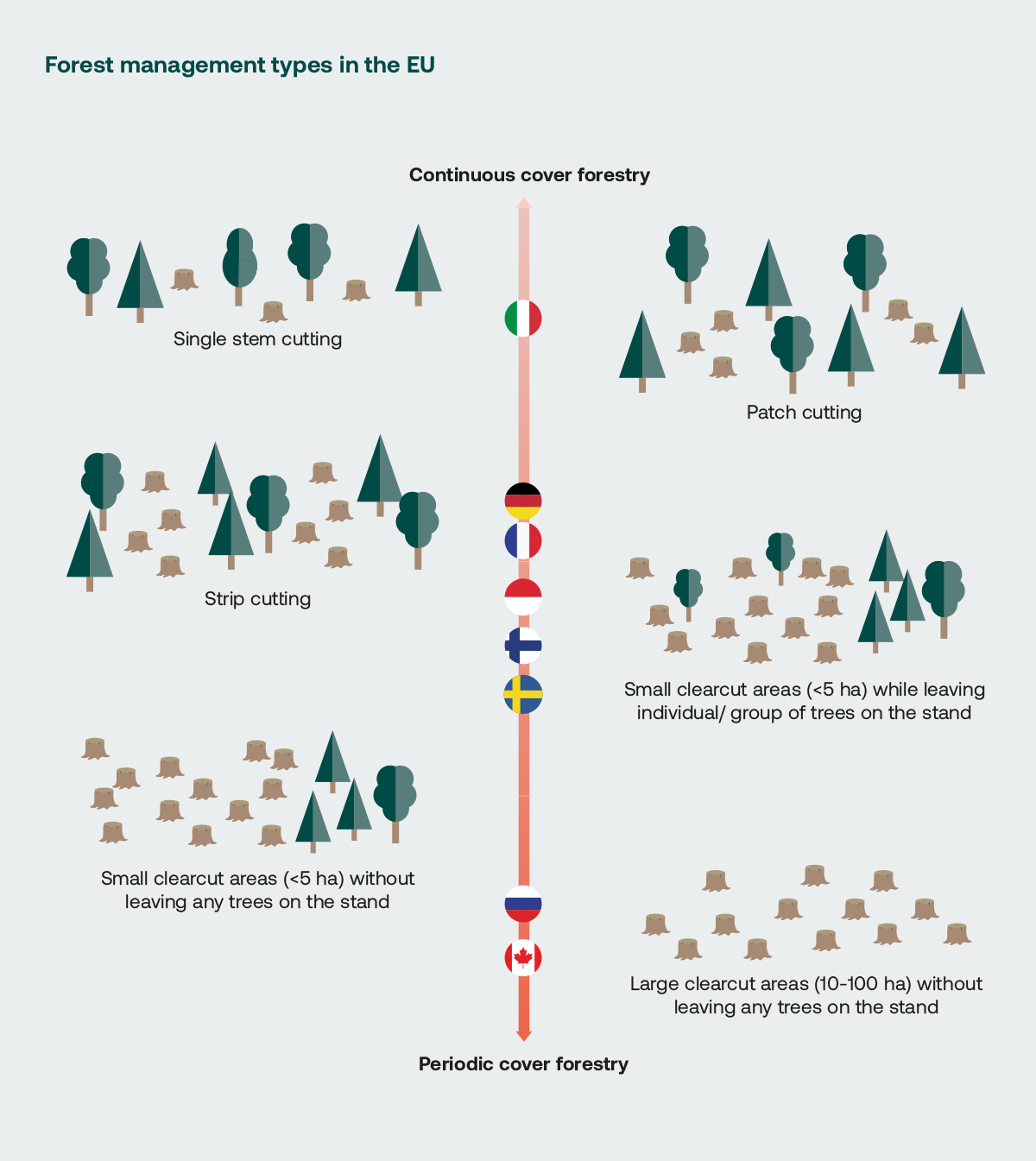The European Forests
Forests play a vital role in the green transition of our societies. European forests range from the pine forests of the Canary Islands in the south, to the birch forests north of the polar circle in Sweden and Finland. Applying the same set of policies for a region as diverse as this is challenging, if not impossible.
Forest areas in Europe have increased in the last three decades from 145 million to 159 million hectares, thanks to natural processes, afforestation, sustainable management, and active restoration. Forestry innovation needs to continue in order for biodiversity to be better understood and for new wood-based products that can replace fossil-based products to continue to be developed.
The climate zones of Europe are wildly diverse, from a 22.3°C average yearly temperature in Malta to –0.3°C in Nuorgam, Finland. Geographically, the EU stretches from a latitude equivalent to the northernmost part of Alaska to Mexico in the south. Applying the same set of policies for a region as diverse as this is challenging, if not impossible.
In the forest debate forest management is often portrayed as one of two distinct types: continuous cover forestry or periodic cover forestry. In reality, the bulk of European forest countries apply some version of either patch cutting or small clearcutting, with local exceptions.
The forest area is increasing in Europe
The forest area has increased by 9 per cent since 1990 and today forests cover 35 per cent of Europe’s total area. There are large differences between different regions of Europe in terms of tree species. Coniferous trees dominate two thirds of the forests in North Europe, while broadleaved trees represent more than 60 per cent of the forests of SouthWest Europe.
A Growing Resource for a Sustainable Future
European forests play a strategic role in reducing Europe’s reliance on imported raw materials and energy. They provide timber, biomass for clean energy, and serve as carbon sinks. Over the last three decades the growing stock of wood has increased from roughly 15 to almost 23 billion m3 in EU28. At the same time, the use of wood has increased. As an example, the yearly production of roundwood increased from 343 million m3 in 1990 to 443 million m3 in 2014. After the temporary decrease in 2020, roundwood production increased by 3.8 per cent in 2021 and stabilised in 2022 (0.04 per cent increase). In 2022, it reached an estimated 510 million m3, according to Eurostat. This is 26 per cent more than at the beginning of the millennium, showing that it is possible to sustainably provide the bioeconomy with raw material.
All forests are different – but all forests need to be managed sustainably
Forests vary significantly, requiring bespoke management approaches. For instance, boosting dead wood is essential for biodiversity in Swedish or Finnish forests but poses a fire risk in Southern EU forests. Overarching European goals are important, while allowing individual countries and forest owners to determine specific management practices. One approach doesn’t suit all in forestry.


